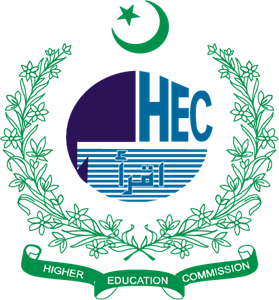TECHNOLOGY AND ITS IMPACT ON PHYSICAL THERAPY
DOI:
https://doi.org/10.52442/rjhs.v4i1.277Abstract
Characterized by constant changes and high levels of uncertainty, health and education systems are considered as complex adaptive systems due to lack of predictable outcomes and clear boundaries. In these complex systems, it is becoming difficult to analyse and interpret the complicated interactions of data. Advancements in modern technologies in rehabilitation sciences such as Artificial Intelligence and Virtual Reality will play an integral role in enhancing the cognitive abilities and clinical reasoning in order to effectively function in these increasingly complex systems. Nevertheless, future health professionals will have to make changes in their fundamental concepts regarding clinical practice.1
Artificial Intelligence based research has led to development of expert systems which guides the clinical decision making using specific computer-based algorithms that outperforms human beings and results in better diagnostics and outcome predictions.2 In addition to that the AI system is advancing rapidly in the domains of information retention and retrieval, reasoning and problem solving, image recognition and planning. It is worth mentioning that all these functions are the fundamental aspects of physical therapy practice. Therefore, it is reasonable to forecast that most of the physical therapy practice will be increasingly vulnerable to be automated by Artificial intelligence-based systems.3
Some of the examples of Artificial intelligence and modern technology in the clinical practice of physical therapy are the video analysis software, robotics, virtual reality, expert systems and algorithms for prediction.4 Virtual reality is a computer-based technology which allows patients to interact with an artificial three-dimensional (3-D) environment of different sensory inputs such as visual and cognitive. Virtual Reality is used in the rehabilitation for different purposes such as pain management, neurological rehabilitation, motor control and to improve functional ability.5 There is an increasing amount of evidence which suggests enhanced neuroplasticity after training of virtual reality in stroke patients. By manipulating the patient’s virtual perceived environment, primary motor region in the brain is activated to a greater extent. Mirror therapy can also be incorporated in the virtual reality in which patient moves their unaffected extremity while perceives the movement of the affected side, hence recruiting more primary motor region.6 Virtual reality also showed promising results in management of chronic pain and central sensitizations. The most widely acceptable model which explain the impact of VR on pain is the ‘Gate theory of attention’ which postulates that virtual reality reduces acute but specifically chronic pains by diverting patient’s attention away from the pain. Some studies also suggests that release of endorphins as a result of pleasure from games and environmental manipulations used in VR could have positive effect on decreasing the pain.7
Video analysis uses open pose which is an open-source library developed in C++ for the detection of posture. Steps involved in video analysis are recording and uploading video of an exercise or specific posture, pose estimation, scoring function and then evaluating results through human key points and sending these results to physical therapists for further clinical decision making.8 Robotic technology is advancing rapidly in physical therapy and rehabilitation sciences. Robotic physiotherapy is used in many areas of rehabilitation programs such as in upper and lower limb post stroke rehabilitation, in impairments after musculoskeletal disorders. Robotic devices used in gait recovery after neurological insults uses power orthosis with computer-controlled motors to support the movements of joints which increases the therapeutic dose of movement while also offloads the burden on therapist. These robotic devices also improve the proprioception of the joints being moved by robots.8 Robotics in rehabilitation is categorized in two main types: therapeutic and supportive. Therapeutic robots aim to decrease the impairments, improve the functional capabilities and goal oriented robotic-assisted exercises while supportive robotics are mainly used for people with disabilities to help them in their daily living and also improves their cognitive functioning.10
Artificial intelligence systems are having profound effects and changes on our health care system. Physical therapists need to re-evaluate that how fit they are in this intelligence age which are characterized by prediction algorithms, massive data sets of vast complexity and smart machines. Successful practice in the future will require that health care professionals have sound knowledge about how these machines work and how to use them for a better clinical decision making which in turn will lead to improved patient care. Those clinicians who have inadequate knowledge about the use and incorporation of these devices in patient care will face more challenges in performing their practices in the future. Knowledge about the use of these technologies in learning as well as in rehabilitation should be incorporated at under and post graduate levels.







